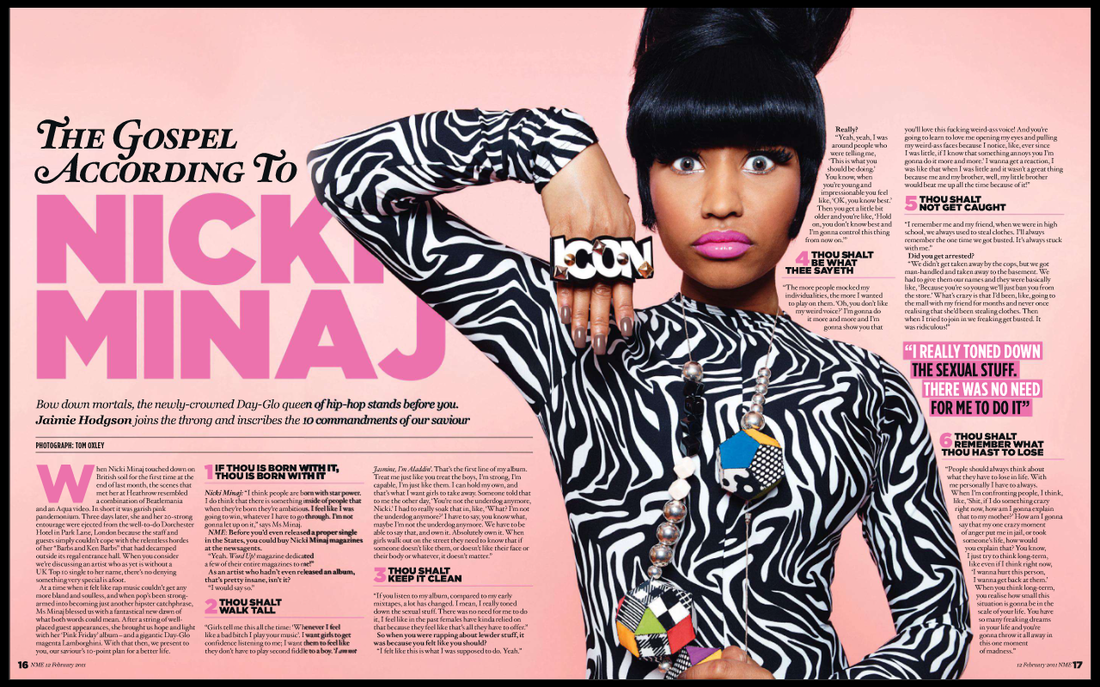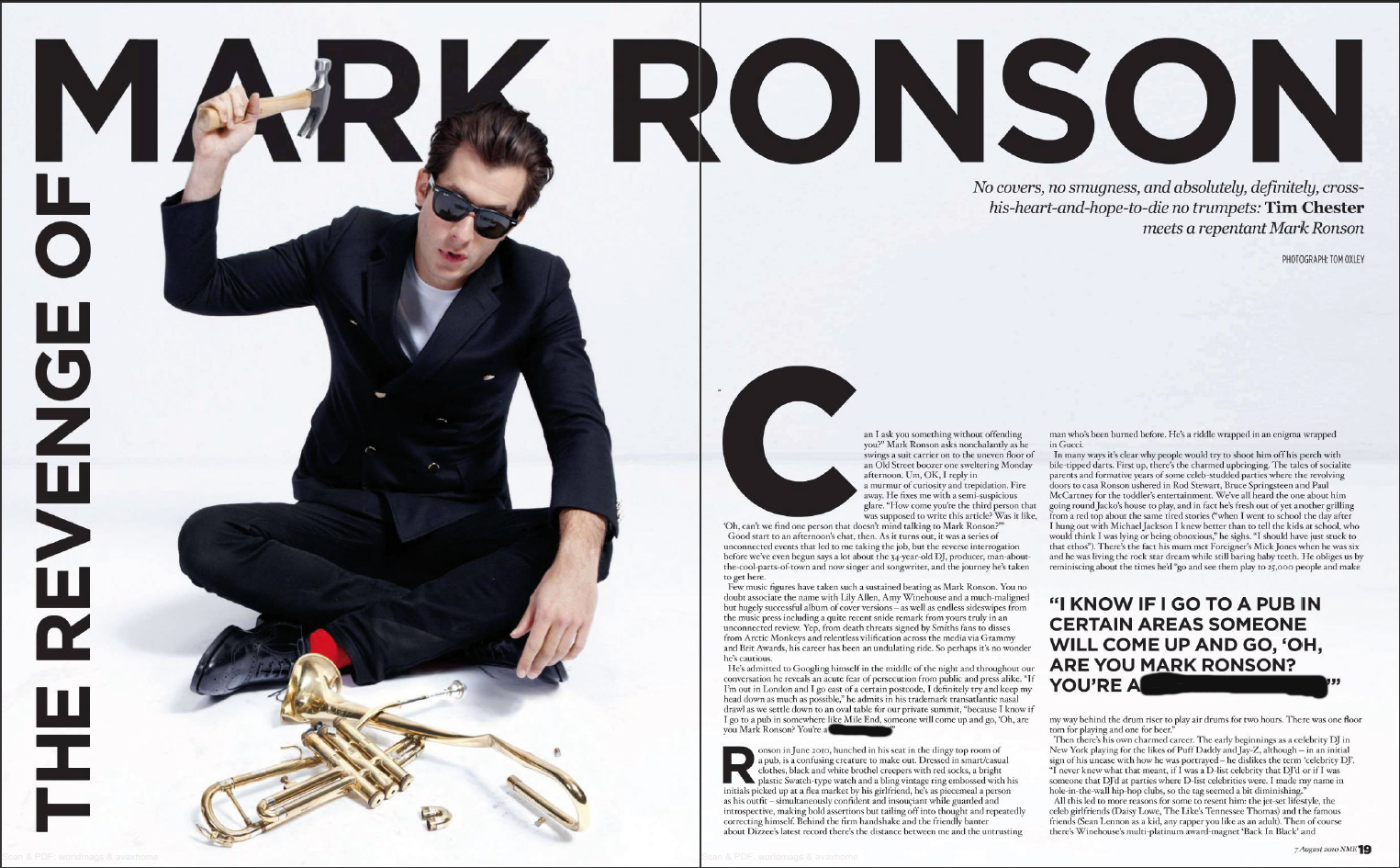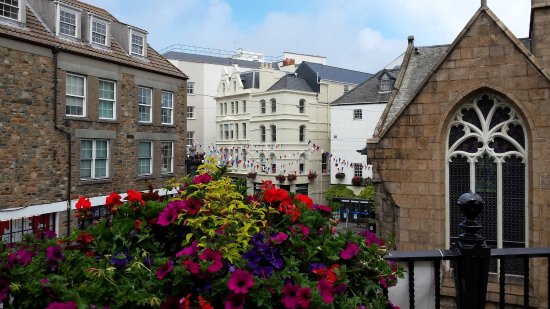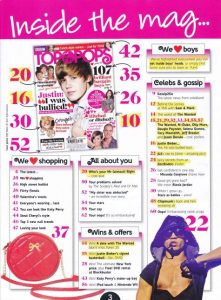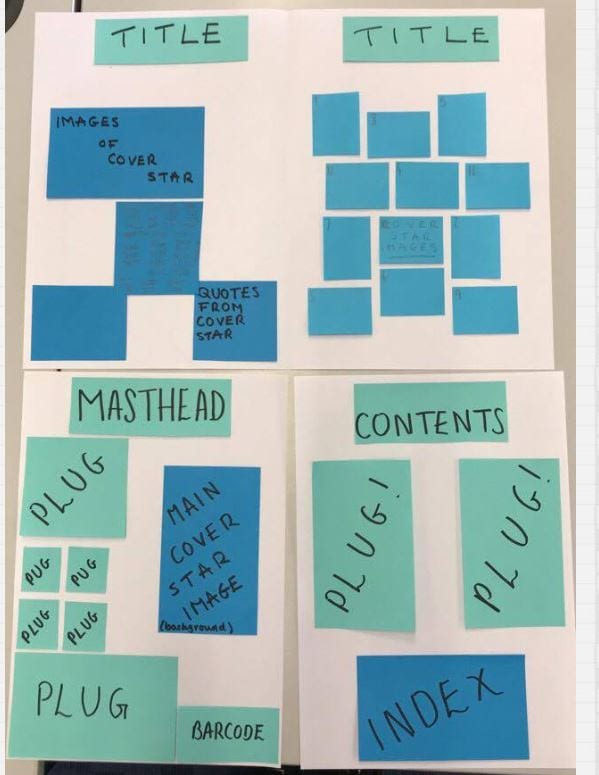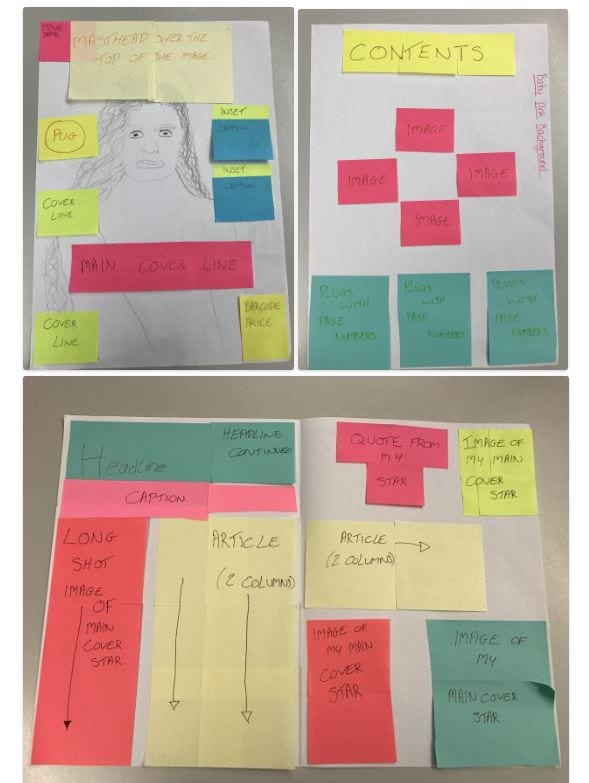What is a double page spread?
Quite simply, an article that takes up 2 pages and includes copy and photographs. It is usually the ‘centre’ two pages of a magazine and will usually feature the main cover star from the front cover. In other words, it is THE BIG STORY.
In the New Year, we will be focusing on the copy, headlines, captions and how to write the main feature for the double page spread. Writing well and in the right register for your audience is a skill all media communicators need to master.
In the meantime, mocking up and drafting your double page spread should be done before Christmas.
Here are some classic examples of music magazine double page spreads.
Here are some basic conventions, codes of how a double page spread usually appears.
- The image will go across the two pages or be on one with the writing on the other side. Usually the photo goes on the left but not always. The writing in a column will NEVER be split across the staple line!
- Stand first– this is an introduction to the article – it will sum up/precis what the article is all about and entice the reader to read on.
- Drop capital – it extends down 3 or 4 lines. At the start of paragraphs the first letter is often much larger; makes reading easier and acts as navigation through the text.#
- Quotes – can be controversial and used to break up the copy/text or act as a headline and could use a larger, stand out font.
- Headline – sometimes a quote from the interview with the artist. Often uses alliteration so that the headline stands out.
- The By Line – says who the article is by.
- Direct address – the model will often break the 4th wall.
- Columns usually 2 or 4 with equal guttering (spacing horizontally between paragraphs and vertically between columns).
- Colour scheme – continues with the brand, vibe of the other pages i.e. cover colour scheme.
- Page numbers and a little version of masthead or logo somewhere on the page.
- Instead of full stop at the end of the article they use a small block or something to do with their logo/masthead (for example on NME they might have an ‘n’).
- Appropriate language/register to establish a relationship with the target audience.
- They may have a release date for album or a tour date.
- On the photo they usually have somewhere by it the name of the photographer.
- Questions to the artist from the interview will be in a different colour, and the name of person who asked the question.

